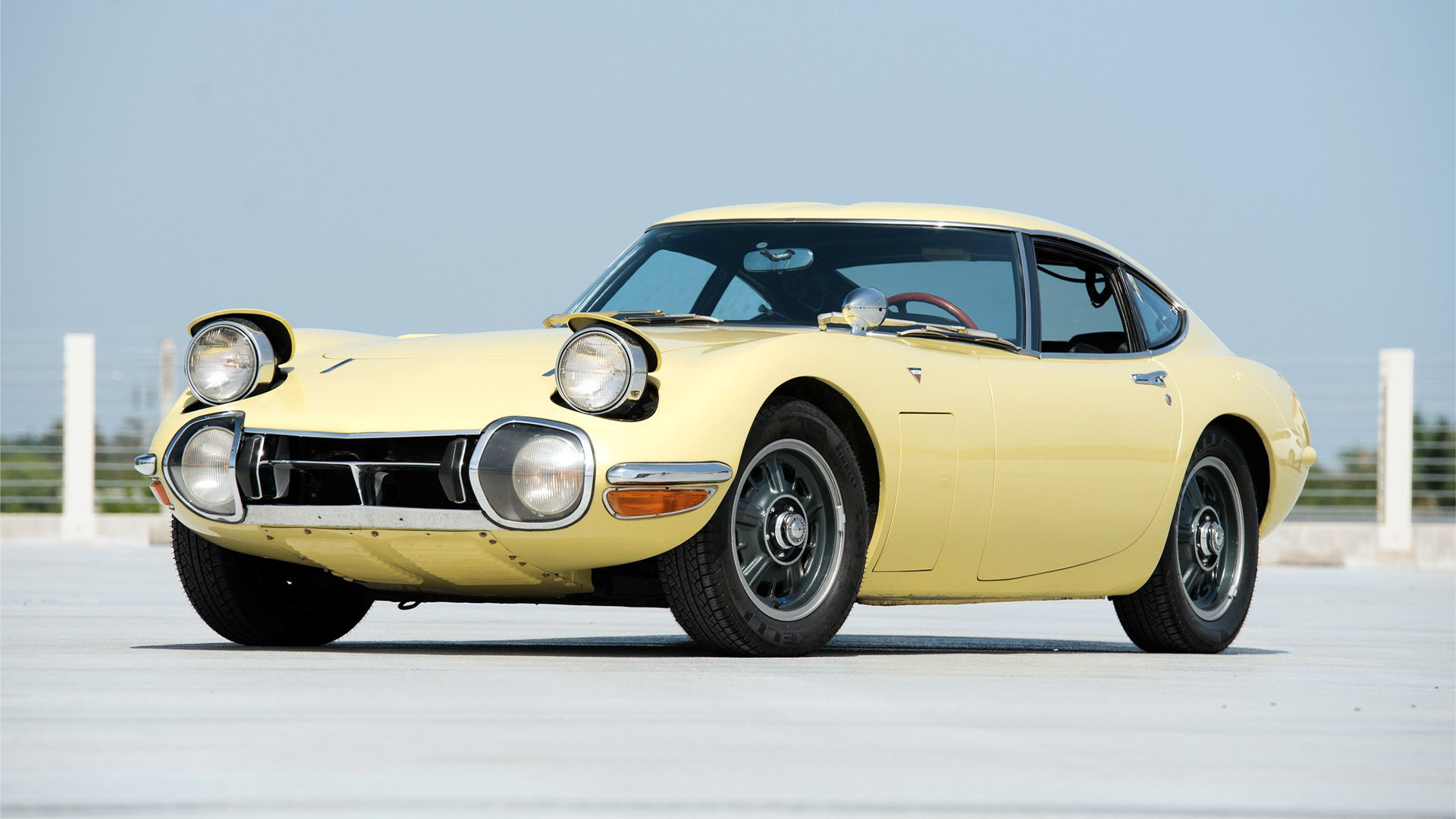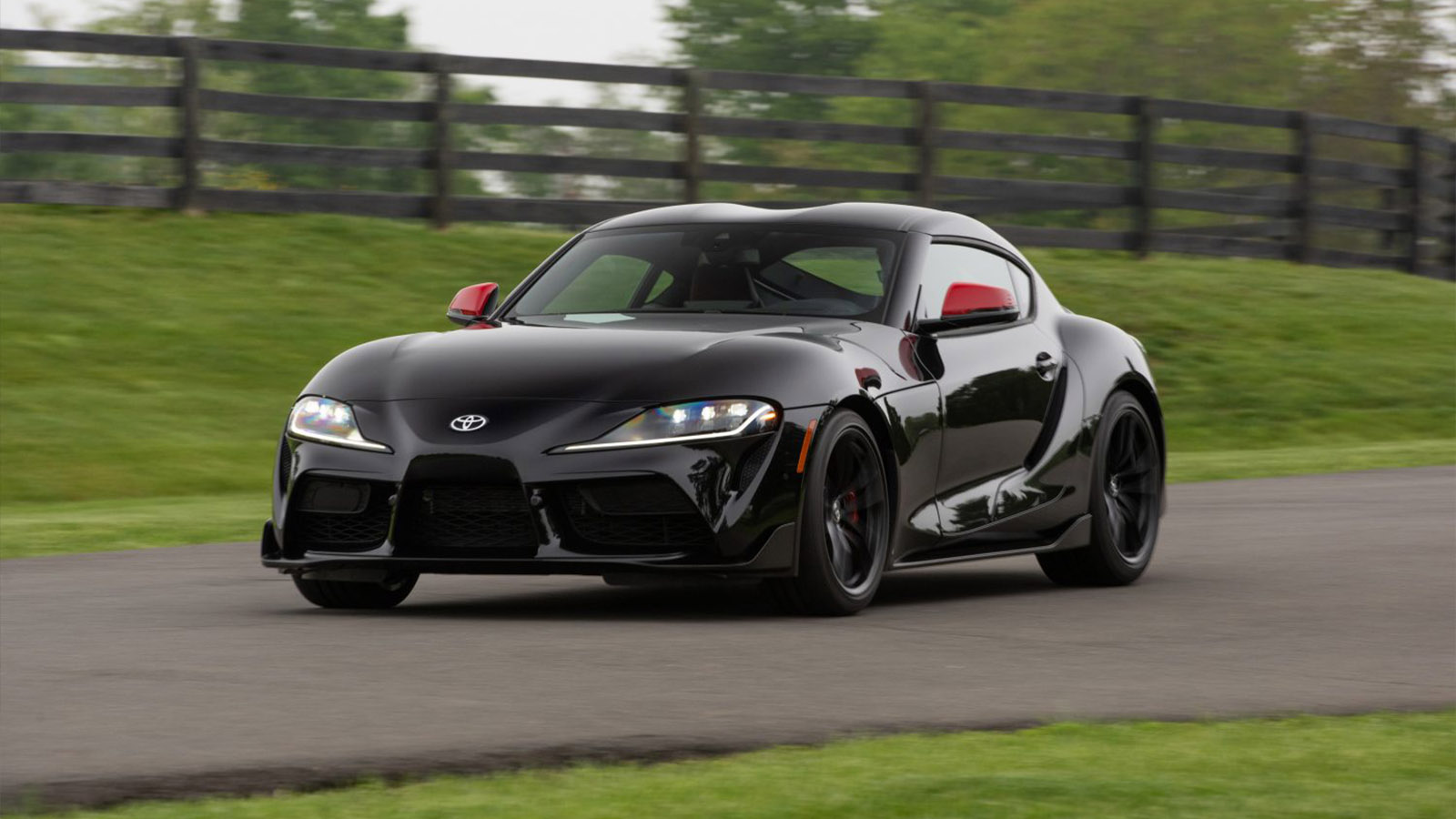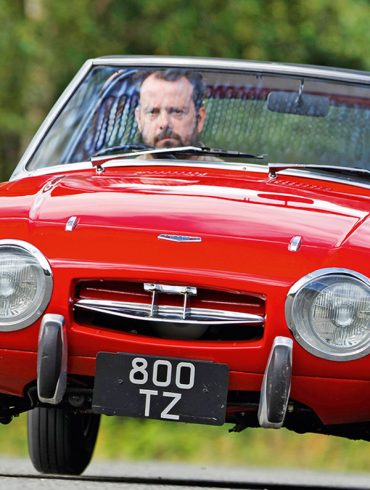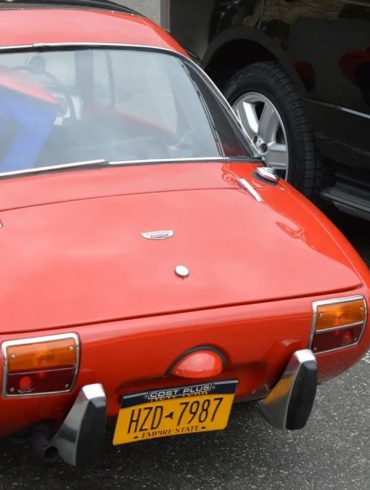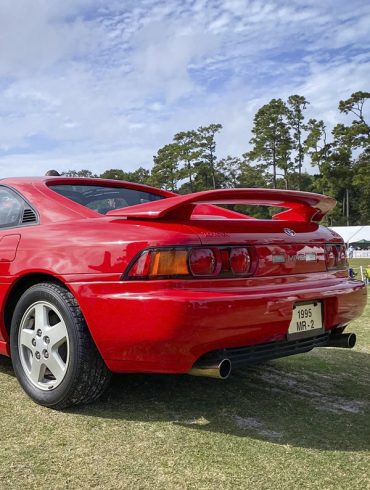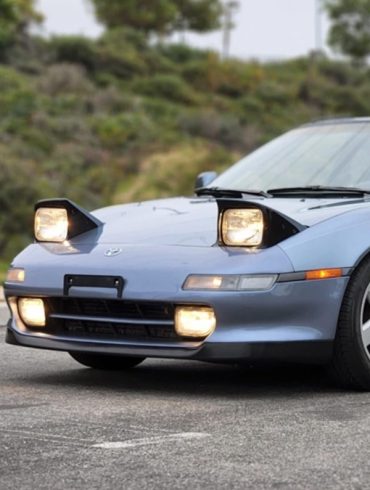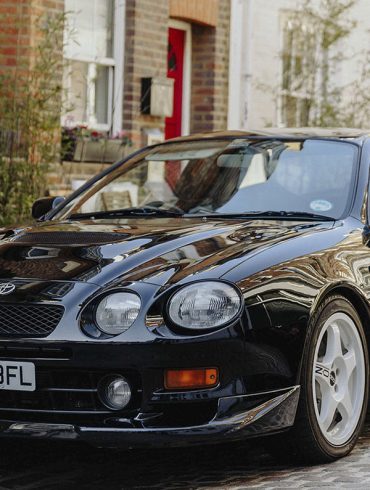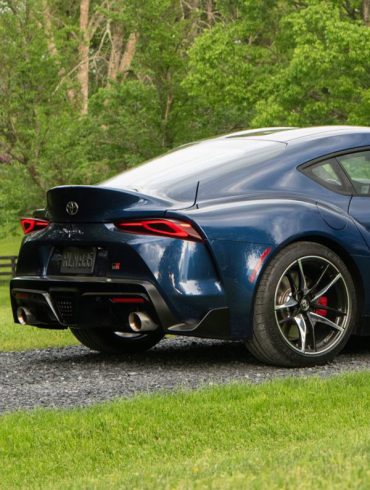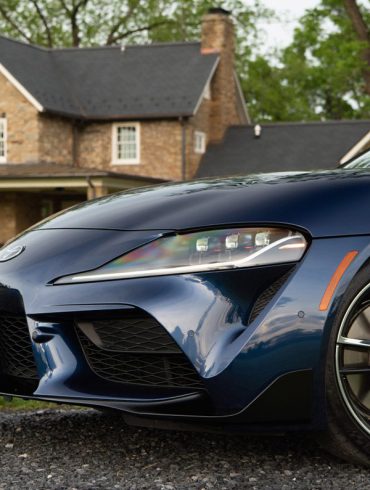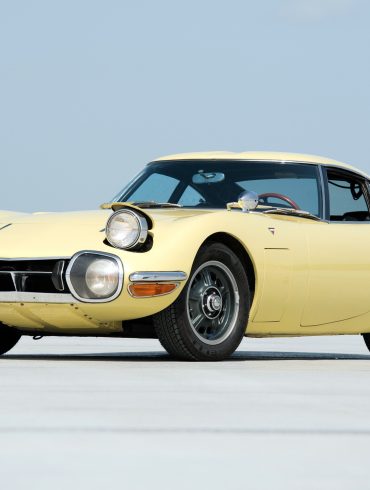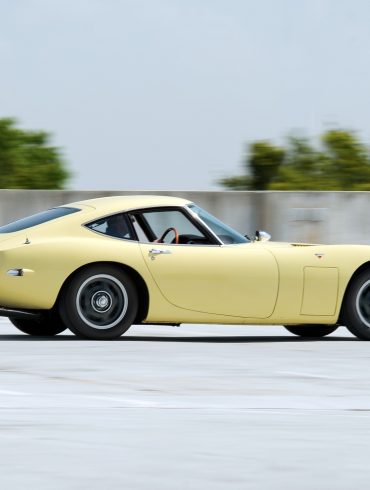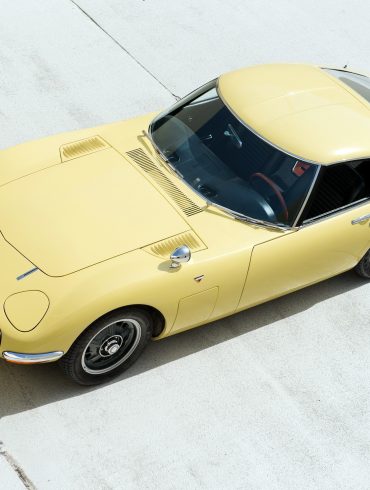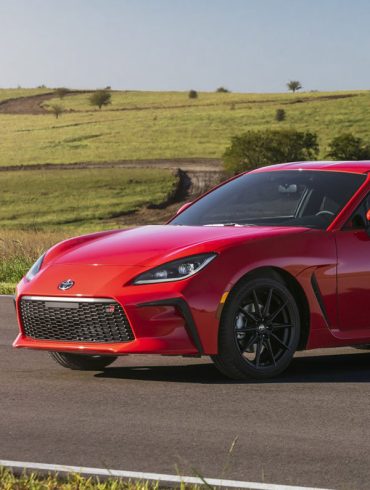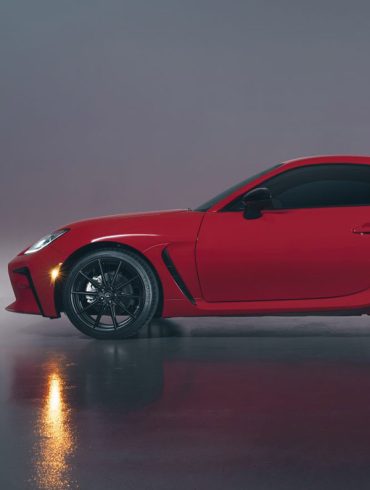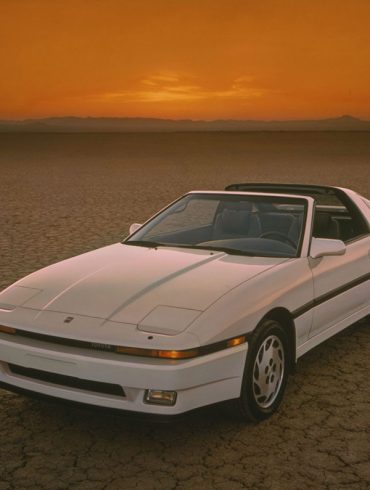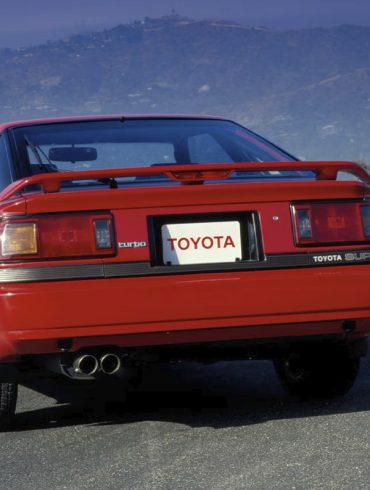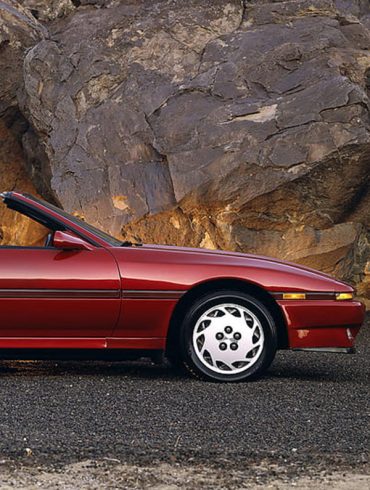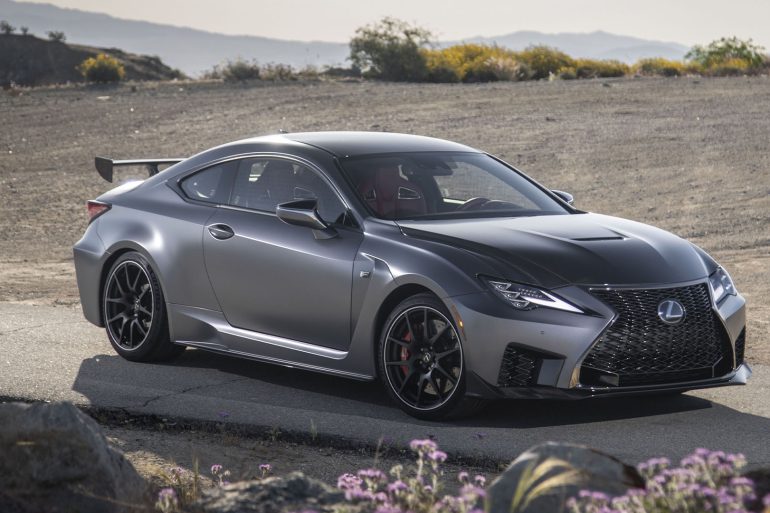About Our Selections
Undoubtedly one of the most recognizable names in the automotive industry worldwide is Toyota. Renowned for pioneering eco-friendly hybrid car models and competing in Formula One.
But despite having such significant accomplishments under their belt already, Toyota has yet to be a name that comes to an enthusiast's mind. Nevertheless, we've got you covered with a list of Toyota's best sports cars of all time.
Our collection includes classics like the Toyota S800 and the all-time fan favorite, the Supra. So gear up and take a look at our expertly picked selection.
The Most Notable & Desirable Toyota's Ever Made
These Toyota models were picked due to their collector's status, inherent value, or landmark impact they made on the industry.
1965 Toyota Sports 800
Before the Supra, Celica, and MR2, there was the Sports 800
What Makes It Special
Before Toyota sports cars became an iconic staple of car culture worldwide with models like Supras and GT86s, there was the pioneering two-door Sports 800 model—the forefather that started it all. Although rival brand Honda's S800 gave fierce competition to Toyota at launch thanks partly to its diminutive proportions, the Sports 800 held its own due to sleek design choices like affordability and minimal build weight.
It wasn't until 1965 that Toyota unveiled something innovative with the release of the Sports 800, their first-ever sports car pick and considered the Supra's grandpa. This diminutive vehicle had an undeniable charm with its English-influenced styling, characterized by a lengthy bonnet and stubby rear trunk area, while running on a modest that pushed boundaries at the time.
While commonly underrated as an entry-level sports car produced concurrently between 1965 and 1969, The S800 model from Toyota featured an air-cooled boxer 0.8-liter two-cylinder engine capable of producing just shy of 44 horsepower and tipping well under 880 pounds overall.
Engine & Drivetrain Specifications
Engine: 0.8L Air-Cooled Two-Cylinder Boxer
Power: 44 hp
Torque: 49 ft-lbs @ 5,400 rpm
Transmission: 4-speed Manual
Accomplishments, History, & Racing Achievements
The sporting performance and design made the Toyota Sports 800 an instant hit among young drivers. Thanks to its dependable engine and fuel economy, it succeeded in long-distance races like the Fuji 24-hour race held in 1967. Besides securing the first two positions with their legendary 2000GT, Toyota attained a spectacular podium finish by scoring third place via the Sports 800.
Resources & Owner's Communities
Toyota MR2 Turbo
A rare and wild specimen
What Makes It Special
The remarkable Toyota MR2 MK2 Turbo edition produces an impressive 200 bhp power output at 6,000 rpm and identical torque numbers close to 3,200 rpm, a testament to these engineering feats. Such was Toyota's commitment to enthusiastic drivers that they offered this sports machine loaded with a 5-speed manual.
Despite these early obstacles, adding a turbocharger made the MR2 even more appealing for those looking for more performance without breaking the bank. Whether you're after an edgy look or unbeatable reliability from your ride, the MR2 delivers both.
While there was scope for better weight distribution (-42/58), its innovation spoke volumes about pushing boundaries regarding performance and handling.
The attention the first MR2 MKII received from journalists upon entering America's market remains one factor behind its popular demand among enthusiasts today due to headlines concerning less than satisfactory handling at first glance.
Engine & Drivetrain Specifications
Engine: 2.0L Turbocharged Intercooled DOHC Inline-Four
Power: 200 hp
Torque: 200 ft-lbs @ 6,000 rpm
Transmission: 5-speed manual
Accomplishments, History, & Racing Achievements
The MR2 Turbo earned considerable accolades, including multiple Car of the Year awards between 1984 and 1985, thanks to being engineered with a unique configuration optimized for enhancing driving dynamics: reducing inertia during corners to curb understeering and oversteer tendencies typically experienced among typical front-end designs.
Resources & Owner's Communities
Celica Supra
The Fancy Celica that became an automotive icon
What Makes It Special
The first-gen addition, designated strictly as Toyota's sports car, featured an entry-level engine at 2 liters, producing 123 horsepower, and later models with a 2.8-liter inline-six and 148 horsepower. The Celica Supra also has a four-speed torque converter auto or five-speed manual.
Although Toyota reduced costs by fitting it with a live rear axle, the Celica Supra had impressive performance features to enhance its handling on curvy roads, such as all-around disk brakes and an optional LSD.
This Supra model proved agile on curves compared to cars of similar vintage in the United States. But even though it had better build quality and handling than powerful rivals like Mustangs and Camaros of its era, the Toyota Celica Supra generation failed to capture potential customers' interest and eventually stopped production after three years.
Engine & Drivetrain Specifications
Engine: 2.8L Inline-Six
Power: 148 hp
Torque: 175 ft-lbs @ 5,600 rpm
Transmission: 5-speed manual / 4-speed auto
Accomplishments, History, & Racing Achievements
Toyota launched its Celica Supra in 1978; unlike other versions based on this model series, it had significantly larger dimensions and design changes to accommodate more powerful engines underneath its hood.
The highest-end trim level for Toyota's Celica lineup once went by "Celica XX" in Japan before becoming its standalone model by the name "Supra" by 1983, when Toyota separated its lineup.
Resources & Owner's Communities
The Best Performing Toyota Cars Ever Made
These Toyota machines push the envelope of what performance and reliability can achieve together.
Toyota Supra MK4
Legendary, tuner-friendly, bullet-proof
What Makes It Special
Few cars in recent automotive history have had a legion of fans, but the Toyota Supra is one of them. And that is something remarkable when talking about a car that started as just another version of another vehicle: in this case, the Toyota Celica.
The Supra began at the bottom of the sports car ladder and worked up to its model. It became a cult model for many reasons until it reached the current generation, the Toyota GR Supra.
For Toyota, the Supra is Nissan's equivalent of the GT-R. The car achieved a special status in the West for reasons sometimes far removed from the competition. However, that should not obscure the merits and qualities of the vehicle.
The Supra MkIV debuted a design made up of curves during the Biodesign era, characterized by an imposing rear wing. The car was smaller, lower, and wider than the MkIII. Its inline 6-cylinder engine developed 220 hp, while the biturbo variant delivered 330 hp. In its day, it was the most powerful Toyota ever made. With a 0 to 60 mph time of 5 seconds, even today, it's still considered a fast car.
Engine & Drivetrain Specifications
Engine: 3.0L Twin-Turbo Inline-Six
Power: 320 hp
Torque: 325 ft-lbs @ 4,800 rpm
Transmission: 5-speed manual
Accomplishments, History, & Racing Achievements
The MK4 Toyota Supra (JZA80) won the Japanese Touring Car Championship in the premier GT500 category in 1997, 2001, 2002, and 2005. And although the car initially ran with a 2.1L 4-cylinder turbo engine, the 4T-GTE, in the early 2000s, the V-8 type 3UZ-FE of the Lexus SC430 was chosen, duly prepared for competition.
Outside Japan, the MK4 Supra did an outstanding job at the 1995 24 Hours of Le Mans with the ADRS team, finishing 14th overall.
Resources & Owner's Communities
Toyota Celica GT-Four ST-205
One of the last Group A on the street
What Makes It Special
The Toyota Celica GT-Four ST205, one of the last Group A street cars and the last one from Toyota, is a perfect candidate if we want a car from the world of competition with a story to tell that is perfect for daily use.
The Toyota Celica GT-Four ST-205, or GT-Four, was manufactured between 1994 and 1999 to face Group A of the WRC. It started with the 3S-GE with a CT20B turbo, a water-cooled intercooler, intake valves with a higher lift, and a new MAP sensor. The compression ratio was reduced from 8.8:1 to 8.8:1 to avoid problems due to overpressure from the turbo. The total output was 242 hp at 6,000 rpm (255 hp in the JDM model) and 224 ft-lbs of torque.
This AWD Celica had a 0 to 60 mph time of 6.1 seconds and a 153 mph top speed. Its consumption was respectable for a car with these specifications, and its comfort was unaffected by its prominent competition-oriented architecture. On the contrary, it behaves very well in daily driving.
Engine & Drivetrain Specifications
Engine: 2.0L 16V Turbocharged Inline-Four
Power: 242 hp
Torque: 224 ft-lbs @ 6,000 rpm
Transmission: 5-speed manual
Accomplishments, History, & Racing Achievements
The AWD Toyota Celica GT-Four ST205 was internationally known for its successes and how Toyota engineers cheated in the WRC. The stunt was of such caliber that it was easier to win doing it legally than the way Toyota contrived it in 1995.
The Celica GT-Four ST205 won the entire WRC series and two overall titles in the W2L series.
Resources & Owner's Communities
Toyota GR Supra
Controversial but worthy of the Supra legacy
What Makes It Special
Accused of being just a rebadged BMW Z4 since it's primarily based on the same platform, the new iteration of the legendary Supra nameplate, the Toyota GR Supra (MKV), is a great sports car in its own right. The car offers an excellent blend of power, balance, and agility for ultimate sports driving pleasure.
The GR Supra was conceived as a sports car in all its purity, as it combines a short wheelbase with a wide track, low weight, a low center of gravity, and a very rigid body that gives the car a genuine sporty feeling. Additionally, Toyota has incorporated an Adaptive Variable Suspension (AVS) in the new GR Supra. With MacPherson struts with double-joint springs up front and a five-link axle, you'll enjoy high levels of comfort and exquisite control.
The entry-level GR Supra is equipped with a turbocharged four-cylinder engine good for churning out up to 255 horsepower. However, another option is a ferocious 3.0-liter BMW inline-six-cylinder engine that delivers without compromise. Clocking in at 382 horsepower, the performance of this engine option elevates the GR Supra to new heights while still maintaining an impressive level of control on twisty roads and race courses.
Engine & Drivetrain Specifications
Engine: 3.0L Inline-Six
Power: 382 hp
Torque: 368 ft-lbs @ 2,600 rpm
Transmission: 6-speed manual
Accomplishments, History, & Racing Achievements
Toyota Gazoo Racing recently announced that its GR Supra GT4 customer motorsports vehicle had reached 100 units. Since its introduction in March 2020, which began in Europe and moved to North America, Japan, and other Asian countries, the model has surpassed the milestone in around three years.
The Supra-based, race-modified GR Supra GT4 was created so that customers can experience a thrilling, efficient, and straightforward method to enjoy racing and speed the development of better automobiles through motorsports.
Resources & Owner's Communities
The Best-Looking Toyota Sports Cars Ever Made
The Japanese automaker is renowned for its engineering and reliability, but there are some gorgeous cars in its lineup too.
1967 Toyota 2000GT
One of the most beautiful Japanese cars in history
What Makes It Special
The 1967 Toyota 2000GT is a two-seater coupé with a 2.0-liter DOHC (1988 cm3) six-cylinder engine with a cast iron block. Its impressive powertrain delivered 150 horsepower at 6,600 rpm. Although it doesn't seem much by today's standards, you must remember that we are talking about a model from the 1960s designed in Japan.
Despite its contained power, the 2000GT could reach a top speed of 135 mph thanks to a contained weight of only 2,459 pounds, and other features allowed this car to sprint from 0 to 60 mph in 8.6 seconds.
Although the exterior is art, we can only say that the interior doesn't disappoint. The Japanese automaker provided the 2000GT with luxurious accessories, including a dashboard covered in rosewood veneer, a radio, and many other exclusive details.
An X-shaped spine, a 4-wheel independent suspension with a double-spring design, coil springs, and a 49/51 weight split all worked together to support the ultra-low coupe body. In addition, the 2000GT has 4-disc brakes and magnesium wheels.
Engine & Drivetrain Specifications
Engine: 2.0L DOHC Inline-Six
Power: 150 hp
Torque: 130 ft-lbs @5,000 rpm
Transmission: 5-speed manual
Accomplishments, History, & Racing Achievements
There were three series of the Toyota 2000GT: the MF10, the M10L, and the MF12, which featured a 2.3L SOHC engine. Among them, only 84 were left-hand drive. Unfortunately, the 2000GT never achieved the same success outside Japan, mainly because only 351 units were built and very few were exported.
Before its commercial launch, the Toyota 2000GT set numerous speed records and competed in races in Japan and the US with very positive results.
Resources & Owner's Communities
Toyota GR86
A lightweight, efficient true enthusiast sports car
What Makes It Special
The Toyota GR86 features a compact, lightweight engine with a low center of gravity and a 2.4-liter displacement that delivers superior driving performance, allowing it to go from 0-60 mph in just 6.3 seconds. Engine responsiveness has also been improved, providing a smooth, stress-free feel from low to high RPM.
The GR86 equips a D-4S, a dedicated dual injector that optimally controls two types of injection depending on driving conditions: direct injection, which injects fuel directly into the combustion chamber, and port injection, which injects fuel directly into the inlet port.
The D-4S is paired with a horizontally opposed engine incorporating variable valve timing for better intake and exhaust efficiency. Inheriting an extremely low center of gravity, a front-engine package, and rear-wheel drive, the new GR86 provides exceptional agility.
Gazoo Racing positioned the GR86's overall height and hip point and positioned the seats more toward its center to achieve a lower center of gravity and improve cornering performance. GR86 drivers can experience a real sensation of speed when accelerating and feel as if the car is an extension of their bodies.
Engine & Drivetrain Specifications
Engine: 2.4L Inline-Four
Power: 228 hp
Torque: 184 ft-lbs @ 3,700 rpm
Transmission: 6-speed manual
Accomplishments, History, & Racing Achievements
Because of the commercial alliance between Toyota and Subaru, the new GR86 shares the same base as the Subaru BRZ; however, Toyota focuses on delivering the unique driving sensation characteristic of a GR vehicle through a car designed for exceptional, direct, and satisfying handling.
Recently revealed at the Tokyo Auto Salon, the GR86 conforms to the SUPER GT's specific GT300 (previously known as JAF GT300) rules. This places it in the company of other outstanding vehicles such as the Toyota Prius PHV GR Sport, Subaru BRZ, and Toyota GR Supra.
Resources & Owner's Communities
A70 Supra
The sleek underdog
What Makes It Special
New in '86, Toyota's A70 Supra boasted one of the most powerful grand tourer machines you could get your hands on back then. The wide range of features made it a reliable car to drive: electronic ignition technology powering a sturdy inline-six engine while double overhead cams boosted performance even further. And with four-wheel disc brakes providing excellent maneuverability, exceptional handling was guaranteed wherever you went.
The interior was no less impressive either; Toyota spared no expense when elevating cabin comfort levels. Optional "glove-soft" leather chairs gave riders an elegant yet relaxing experience due to their adaptability alongside power-lumbar supports and manual customizability features that allowed for frame-specific fittings.
The reclining feature had infinitely adjustable headrests and additional space, giving drivers more comfort than similarly-priced vehicles.
The cherry on top: an 3.0 inline-six engine producing a decent (back then) 235 horsepower at roughly 6000 rpm and almost bulletproof for wear-and-tear. Even so-called 'slow' acceleration numbers (getting from zero to sixty in approximately seven seconds) were acceptable for a normally-aspirated car.
Engine & Drivetrain Specifications
Engine: 3.0L Turbocharged Inline-Six
Power: 235 hp
Torque: 253 ft-lbs @ 3,200 rpm
Transmission: 5-speed manual
Accomplishments, History, & Racing Achievements
Toyota made a Group A MkIII Supra that competed in the toughest WRC event called the Safari Rally. The event traveled hundreds of miles throughout East Africa on mud, sand, and dirt, promoting simple construction above speed.
Toyota entered Group A competition in 1987 with the Mk III (A70) Supra, a rear-wheel-drive, 290-horsepower, 3.0-liter '7M' straight six. The FIA homologated Toyota's turbo engine because it was 10 hp short of Group A's 300 hp maximum.


